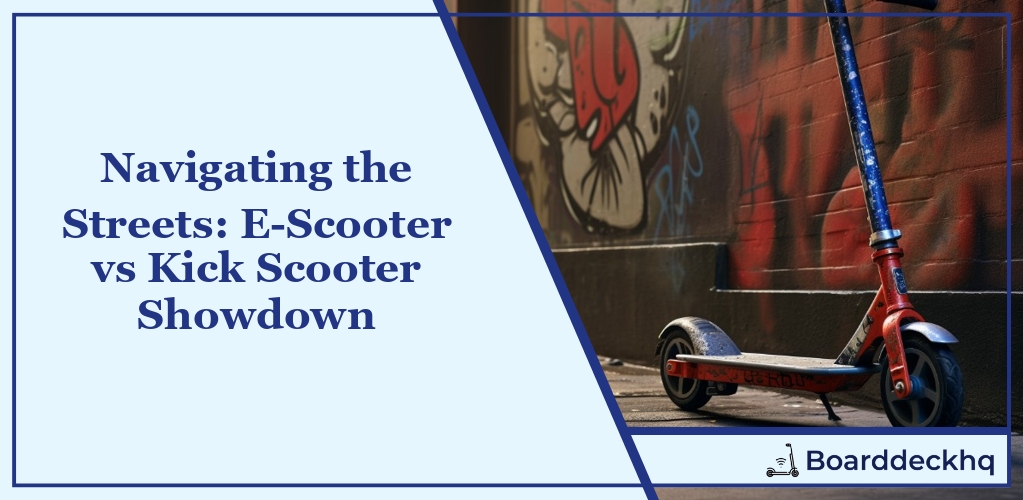Are you finding yourself at a crossroads, trying to decide between the thrilling convenience of an electric scooter and the classic simplicity of a kick scooter? With the surge in popularity of these compact commuting companions, the choice has become increasingly complex. Weighing up the pros and cons can feel like navigating a labyrinth. But don’t worry – we’re here to guide you through this maze, shedding light on everything from basic understanding to safety laws, and even the impact of COVID-19 on scooter usage.
What we’ll cover:
- Scooter Basics: Kick vs Electric
- Pros and Cons: Kick Scooters
- Pros and Cons: Electric Scooters
- Commuting Capabilities: Kick vs Electric
- Safety, Laws and COVID-19 Scooter Update
- Choosing Your Ideal Scooter
So, buckle up and let’s kick-start this journey, as we explore the ins and outs of E-Scooters and kick scooters!
Understanding the Basics: Kick Scooters and Electric Scooters
Let’s start by getting familiar with our two contenders: the kick scooter and the electric scooter. A kick scooter, sometimes referred to as a push scooter, is a human-powered street vehicle with a handlebar, deck, and wheels propelled by a rider pushing off the ground. The most common scooters today have two hard small wheels, made primarily of hard plastic, with a low deck in the middle on which the rider stands. The rider holds onto the handlebars and places one foot on the deck. To move forward, the rider kicks off the ground with the other foot.
On the other hand, an electric scooter, or a motorized scooter, is powered by an electric motor. This means there’s no need for the rider to kick off the ground to propel forward. The electric motor does all the work. The rider simply stands on the deck and controls the speed with a throttle that is attached to the handlebars.
Both types of scooters share some general features. They both have a T-shaped handlebar which is used for steering, a deck for the rider to stand on, and wheels for mobility. However, the electric scooter often has larger wheels and a heavier build due to its motor and battery.
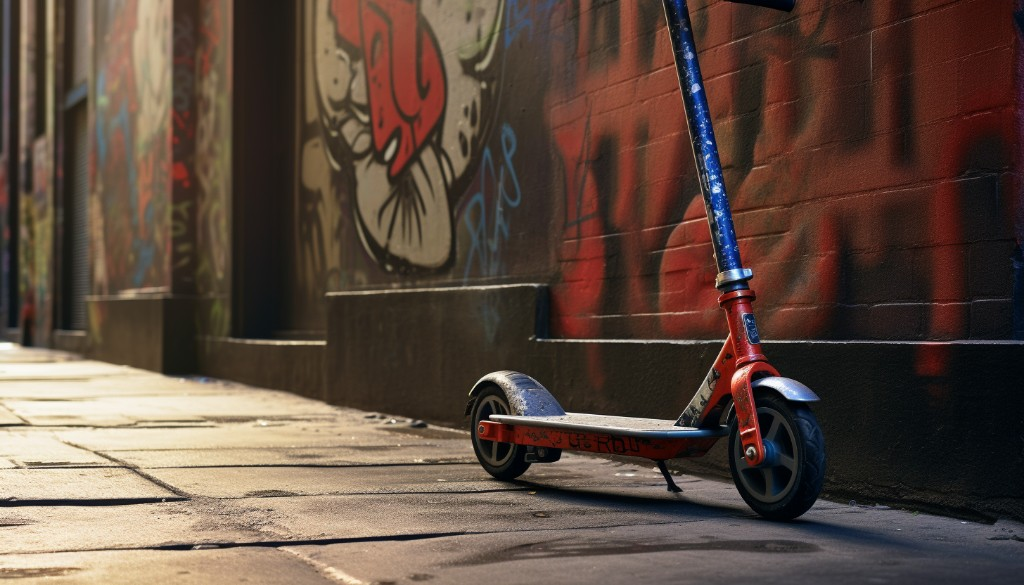
Kick Scooters: A Brief History
Kick scooters have come a long way since their inception. They started as toys for children in the early 20th century, but have evolved into a popular mode of transportation for people of all ages. The rise of scooter culture can be traced back to the late 1990s when a company named Razor introduced a sleek, foldable design that became an instant hit among kids and teens.
The success of Razor’s model encouraged other manufacturers to create their own versions, which led to the proliferation of kick scooters in urban areas around the globe. Today, kick scooters are no longer just a toy; they are a viable solution for short commutes, an alternative to bicycles, and a fun way to get around.
E-Scooters: The Rise of Electric Mobility
Just as kick scooters transformed from a child’s plaything to a serious mode of transportation, electric scooters have seen their own revolution. The advent of electric scooters introduced a new level of convenience and efficiency to personal mobility. These motorized versions brought with them the promise of quicker travel times, especially in traffic-clogged cities.
The early 2000s saw the introduction of the first commercial electric scooters. However, it wasn’t until the past decade that E-Scooters truly started to take off. This was largely due to technological advancements in battery life and motor efficiency, as well as the rise of scooter-sharing companies like Bird and Lime. These companies launched fleets of rentable electric scooters in cities around the world, making this form of transport widely accessible and popularizing the E-Scooter trend.
Today, electric scooters are more than just a fad — they’re a symbol of the growing shift towards electric vehicles and sustainable transport. They offer a green alternative to gas-powered vehicles, and with their compact design, they provide a solution for the “last mile” problem in urban transport — the short distance between a commuter’s home or office and the nearest public transit stop.
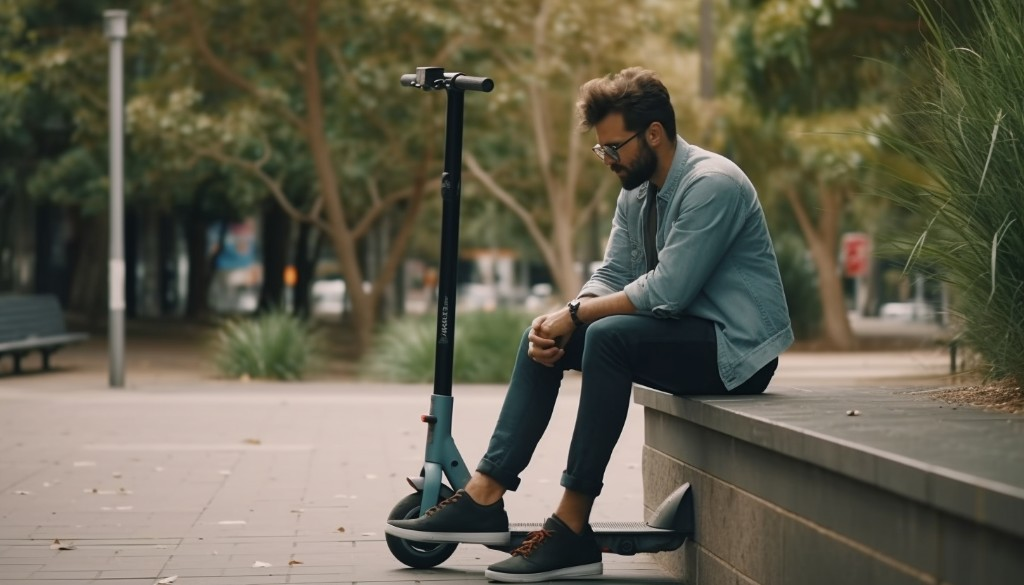
Now that we have a good grasp of what kick scooters and electric scooters are, as well as their history, we can delve into the nitty-gritty details of their advantages and drawbacks.
Advantages and Drawbacks of Kick Scooters
Embracing the Eco-friendly Aspect
Kick scooters are gaining popularity among those who are environmentally conscious. It’s hard to ignore the eco-friendly nature of these non-motorized vehicles. They don’t emit harmful greenhouse gases, thus contributing to a cleaner, greener planet. Also, they consume zero energy resources, a big plus for our already strained planet.
Physical Fitness on Wheels
Scooter physical fitness is another significant advantage that kick scooters offer. With each push, you’re working your legs, improving cardiovascular health, and burning calories. It’s a fun way to stay active and incorporate exercise into your daily routine without hitting the gym. If you’re the kind of person who finds joy in movement, you’ll love the experience of riding a kick scooter.
The Low Maintenance Charm
The beauty of kick scooters lies in their simplicity. They require very little maintenance compared to their electric counterparts. There’s no battery to worry about, no complex electronics to malfunction, and no need for regular charging. Just a quick check on the wheels and brakes, and you’re good to go.
However, it’s not all sunshine and rainbows. Kick scooters do have their limitations. For one, they’re not the best option for long-distance commuting. Your legs might tire out after a couple of miles, making it impractical for longer routes. Also, they might not be ideal for hilly areas as they require human power to move.
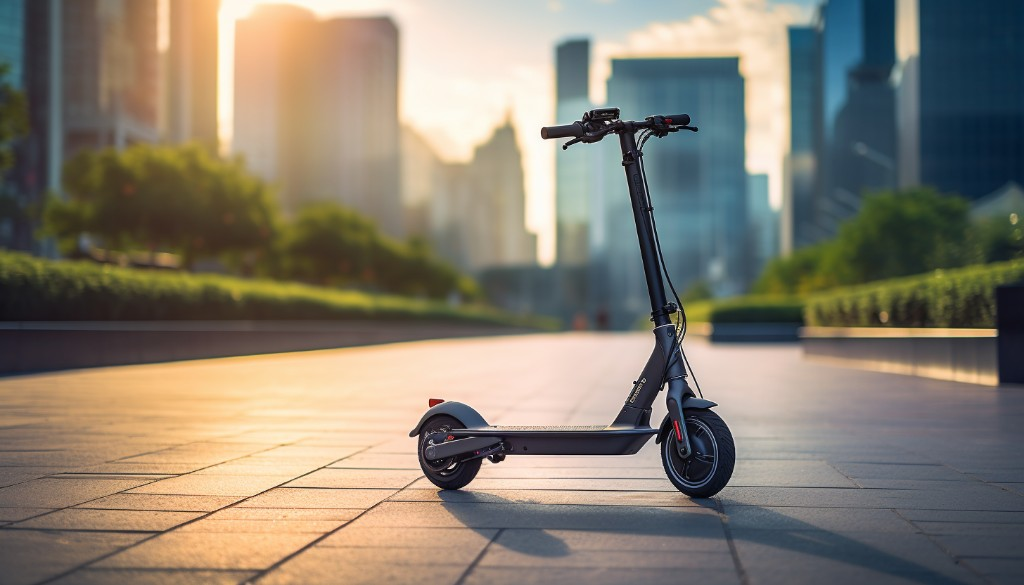
Pros and Cons of Electric Scooters
Convenience at Its Best
Electric scooters are all about convenience. Thanks to electric scooter technology, you can zip through traffic with ease and arrive at your destination without breaking a sweat. They are perfect for those who want a hassle-free commute without the physical exertion that comes with kick scooters.
Advancement in Technology
Electric scooters come with a variety of high-tech features. Some models offer GPS tracking, mobile app connectivity, and even anti-theft alarms. These features provide a sense of security and convenience that is hard to match with a traditional kick scooter.
Yet, electric scooters come with their own set of challenges. One of the most significant drawbacks is their limited range. Even though advancements in battery technology have extended the range of many models, you’ll still need to charge them regularly. Forgetting to plug in your E-Scooter could leave you stranded halfway to your destination.
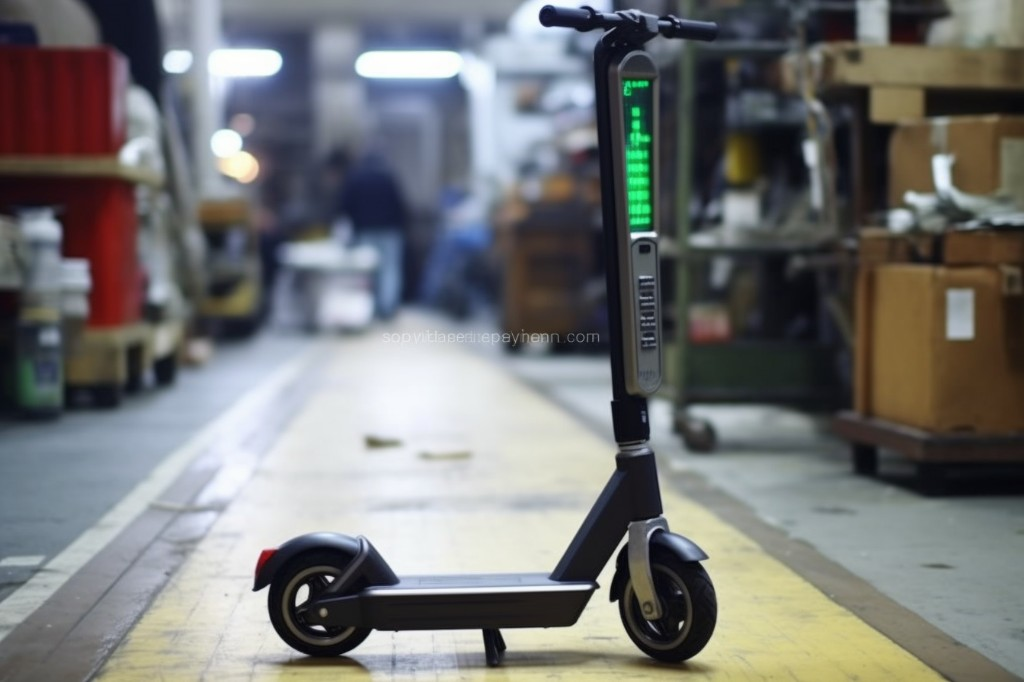
Kick Scooter vs E-Scooter for Exercise
When it comes to physical fitness benefits, kick scooters are a clear winner. To ride a kick scooter, you need to use your legs for propulsion, which can be a great workout. It engages your lower body muscles, improves balance and coordination, and can even boost cardiovascular health.
Electric scooters, on the other hand, provide a more relaxed ride. While they don’t offer the same level of physical exertion as kick scooters, they can still contribute to an active lifestyle. For instance, maintaining balance on an electric scooter can engage your core muscles.
It’s clear that both types of scooters have their own unique advantages and disadvantages. Whether you choose a kick scooter or an electric one, depends on what you value more – exercise or convenience. But one thing is certain: either option can add a dash of fun and adventure to your daily commute.
As we navigate through the world of scooters, it’s important to remember that these vehicles are not just about getting from point A to B. They also offer opportunities for exercise, eco-friendly transportation, and even a touch of high-tech convenience. The choice between kick and electric scooters depends on your personal needs, lifestyle, and preferences.
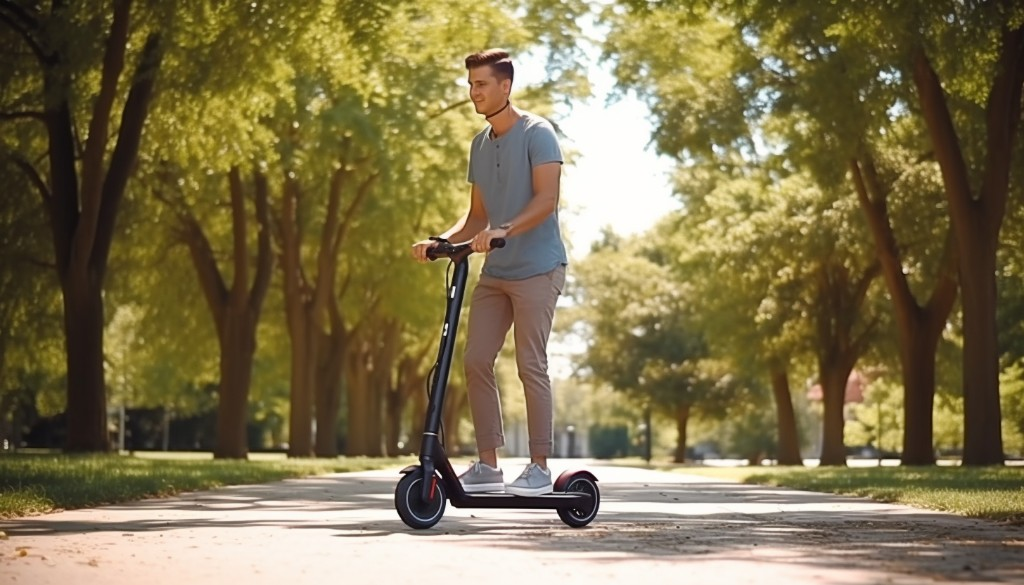
Comparing the Commuting Capabilities of Kick Scooters and Electric Scooters
For many urban dwellers, the daily commute is a chore to be endured rather than enjoyed. In the quest for a more pleasant and eco-friendly way to travel, scooters have emerged as an increasingly popular choice. But is a kick scooter good for commuting, or should you opt for an electric scooter instead? Let’s dig into this.
Kick Scooters: The Traditional Choice
A kick scooter, as the name suggests, is powered by human energy. You kick off the ground to propel yourself forward. If you’re in good shape and enjoy a bit of exercise, a kick scooter can be a great choice for your daily commute.
It’s lightweight, easy to maneuver, and doesn’t require any charging. Plus, it offers a fun way to squeeze in a little cardio workout on your way to work. However, its range is naturally limited by your energy levels and physical stamina. It’s perfect for covering short distances, say, up to a mile or two.
Electric Scooters: The Modern Option
On the other hand, if you’re looking for something that can handle longer distances with less effort, an electric scooter could be a better fit. This high-tech mode of transport uses a rechargeable battery to power its motor, allowing you to zip along at speeds of up to 15-20 miles per hour without breaking a sweat.
But is an electric scooter good for commuting? It depends on your needs. If your commute involves hilly terrain or covers more than a couple of miles, an electric scooter can be a game-changer. However, remember that you’ll need to charge it regularly, and its heavier weight could make it less convenient if you need to carry it up stairs or onto public transport.

Kick Scooter vs E-Scooter for Kids
When it comes to choosing between kick scooters and electric scooters for children, safety is the top priority. Kick scooters are generally considered safer as they travel at slower speeds and offer more control. Plus, learning to ride a kick scooter can help kids develop balance and coordination.
However, electric scooters can also be a good choice for older kids who have mastered the art of balancing and are ready for a little more speed. Just make sure to choose a model with a suitable maximum speed and always enforce the use of safety gear.
Electric Scooter vs Traditional Scooter for City Travel
In the hustle and bustle of city life, commuting can be a challenge. When comparing scooter vs bike for short distance travel, both kick scooters and electric scooters have their merits.
Kick scooters are small, light, and agile, making them ideal for weaving through traffic and taking on crowded sidewalks. You can fold them up and carry them into the office or onto public transport with ease. And let’s not forget about scooter parking – it’s as simple as folding your scooter and tucking it under your desk.
Electric scooters, on the other hand, can make short work of longer commutes and hilly city streets. They’re also a good choice if you’re looking to reduce your carbon footprint, as they emit no greenhouse gases once they’re on the move.
When choosing between an electric scooter vs kick scooter for commuting, consider your typical journey. If you’re covering short distances and value portability, a kick scooter could be your best bet. For longer commutes or those involving hills, an electric scooter might be the way to go.
But whether you choose a traditional or electric scooter, remember that safety should always come first – especially when navigating the busy streets of the city.
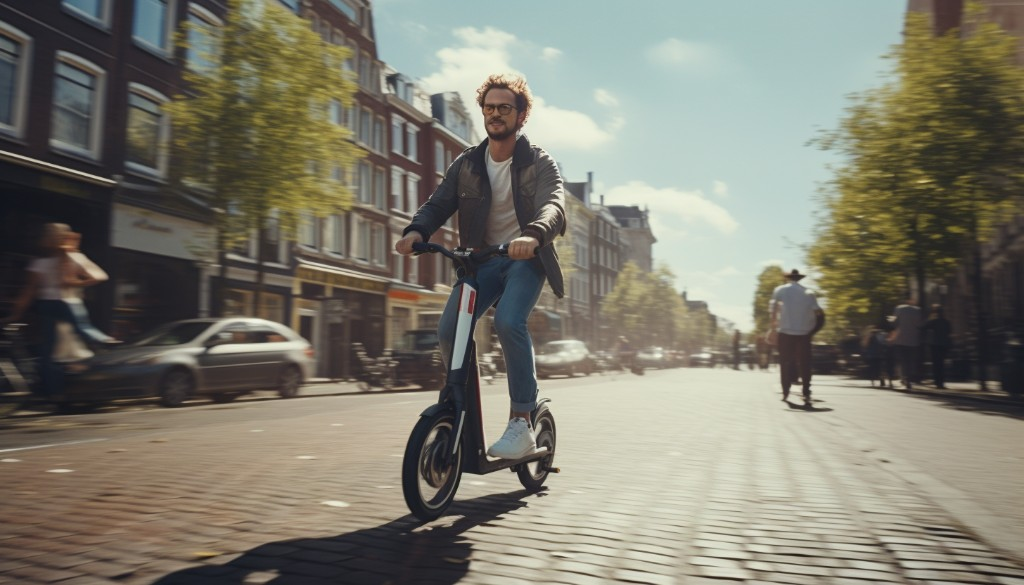 Safety, Laws and COVID-19 Update: What You Need to Know About Scooters
Safety, Laws and COVID-19 Update: What You Need to Know About Scooters
With the growing popularity of scooters, whether electric or kick, it’s important to be in the know about safety measures and legal aspects related to their use. Let’s talk about the elephant in the room first – safety. Yes, scooter safety is a big deal. When you’re whizzing down the street on your shiny new scooter, whether it’s a manual kick scooter or an electric one, safety should always be a top priority.
Electric scooters, with their faster speeds, can seem a bit more intimidating than their kick counterparts. However, it’s crucial to remember that safety isn’t just about speed. Wearing a helmet, elbow pads, and knee pads can significantly reduce the risk of injury. Also, maintaining a sensible speed, especially in crowded areas, is essential.
Now, let’s move on to the legal aspects, including electric scooter license, registration and insurance requirements. Scooter laws vary widely from place to place. Some cities embrace scooters as an eco-friendly mode of transport while others have restrictions or even outright bans. Before you hop on your scooter, make sure you’re familiar with the local laws.
One more thing to consider in our present times is the impact of COVID-19 on scooter usage. With the pandemic pushing us all towards socially-distanced modes of transport, scooters have seen a surge in popularity. However, shared scooter services have had to up their game when it comes to hygiene. If you’re renting a scooter, it’s a good idea to bring along disinfectant wipes and give the handlebars a quick clean before you ride.

Scooter Maintenance and Lifespan
When it comes to maintenance and lifespan, there are some key differences between kick scooters and electric scooters. Kick scooters are generally low maintenance. With fewer moving parts and no electrical components, they’re easier to keep in tip-top shape. Regular checks on the wheels and brakes are typically all that’s needed.
Electric scooters, on the other hand, require a bit more attention. Battery care is crucial for maintaining performance and extending the lifespan of the scooter. It’s recommended to keep the battery charged and avoid leaving it at low levels for extended periods. Be sure to also avoid overcharging your electric scooter, as this can cause irreparable damage. Regular checks of the motor and other electrical components are also necessary.
But what about lifespan? Well, a well-maintained kick scooter can last for years. Electric scooters, while they may require more maintenance, can also have a long lifespan if properly cared for. In fact, many manufacturers are now focusing on scooter recycling programs to reduce environmental impact.
Scooter Pricing and Brands
When it comes to cost, kick scooters tend to be more affordable than electric scooters. However, the price range for both types is quite wide, depending on factors like build quality, brand, and features.
Speaking of brands, there are several popular ones to consider. Razor is a household name in the kick scooter world, known for their sturdy and affordable models. Segway and Xiaomi are big players in the electric scooter market, offering models with impressive speed and range capabilities. Micro is another brand worth considering for kick scooters, especially for their kid-friendly models. Bird, on the other hand, is well-known for their shared electric scooter services.
Whether you’re shopping for your first scooter or looking to upgrade, there’s a world of options out there. From kick scooters that offer a great workout to electric scooters that get you to your destination with minimal effort, there’s a scooter for every need and budget.
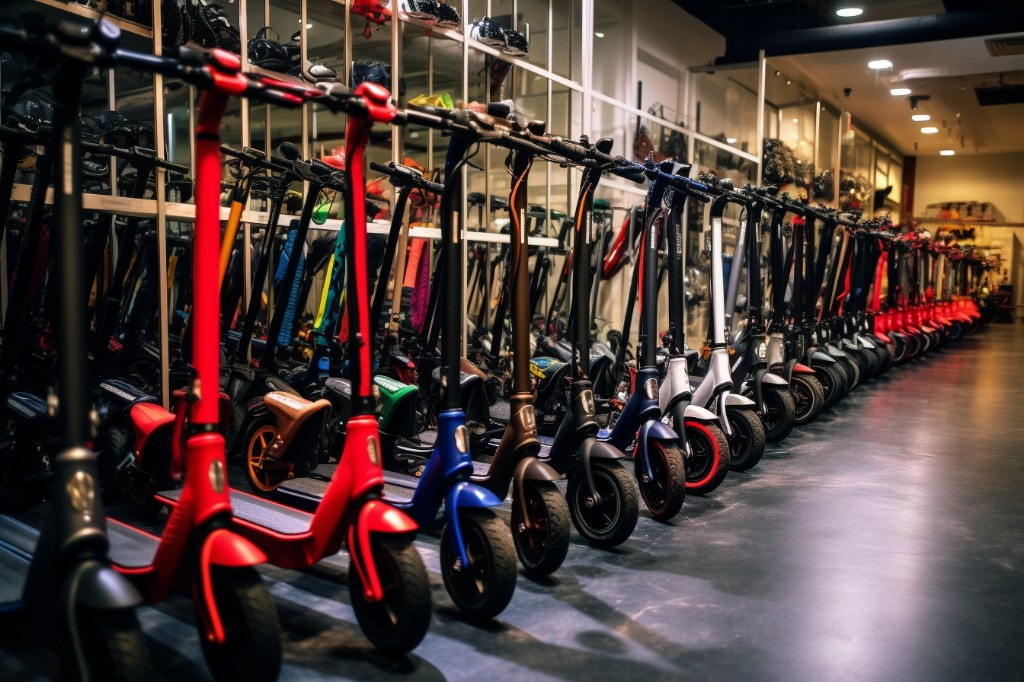
Choosing the Right Scooter for You
When it comes to the E-Scooter vs kick scooter debate, the right choice largely depends on your personal preferences, lifestyle, and commuting needs. In essence, it’s a lot like choosing between a manual and an automatic car – it all boils down to what you value more in your ride.
Factor 1: Lifestyle and Commuting Needs
If your daily commute involves long distances or uphill roads, an electric scooter might be a better fit. With its motor-powered assistance, you’ll reach your destination without breaking a sweat. It’s also a good option if you’re looking to reduce your carbon footprint since it’s an eco-friendly alternative to cars.
On the other hand, if you’re looking for a quick way to navigate short distances or a tool to keep you active during the day, a kick scooter could be your ideal companion. It’s also perfect if you’re seeking an affordable, low-maintenance transportation option.
Factor 2: Speed and Control
When it comes to speed, electric scooters have the upper hand. They can reach up to 20 mph, allowing for faster commutes. However, this speed comes with the need for enhanced safety measures – wearing a helmet is non-negotiable and you should be comfortable navigating traffic rules.
Kick scooters, while slower, offer more control over your pace and movement. This makes them a safer option, especially for kids or those who are new to scooting.

Factor 3: Maintenance and Durability
Maintenance-wise, kick scooters are simpler and cheaper to maintain. With fewer moving parts, there’s less that can go wrong. A good clean and occasional wheel change is usually all they need.
E-Scooters require more care due to their complex mechanics. Electric scooter battery management is crucial – ensuring it’s not left completely drained or overcharged extends its lifespan. Additionally, repairs can be costly if the motor or other electrical components break down.
Factor 4: Portability and Storage
If you’re frequently on the go or have limited storage space, consider the scooter’s weight and foldability. Kick scooters are generally lighter and more compact, making them easy to carry around or store.
Electric scooters, though foldable, are heavier due to their battery and motor. Some models can be quite bulky, making them less ideal for carrying up stairs or storing in tight spaces.
Factor 5: Budget
Lastly, your budget plays a significant role in your decision. Kick scooters are typically more affordable than their electric counterparts. If you’re willing to shell out more for the convenience of a motorized ride, an E-Scooter might be worth the investment.
When choosing between an E-Scooter and a kick scooter, remember that there’s no one-size-fits-all solution. Consider your needs, lifestyle, and preferences to find the perfect scooter that complements your lifestyle.
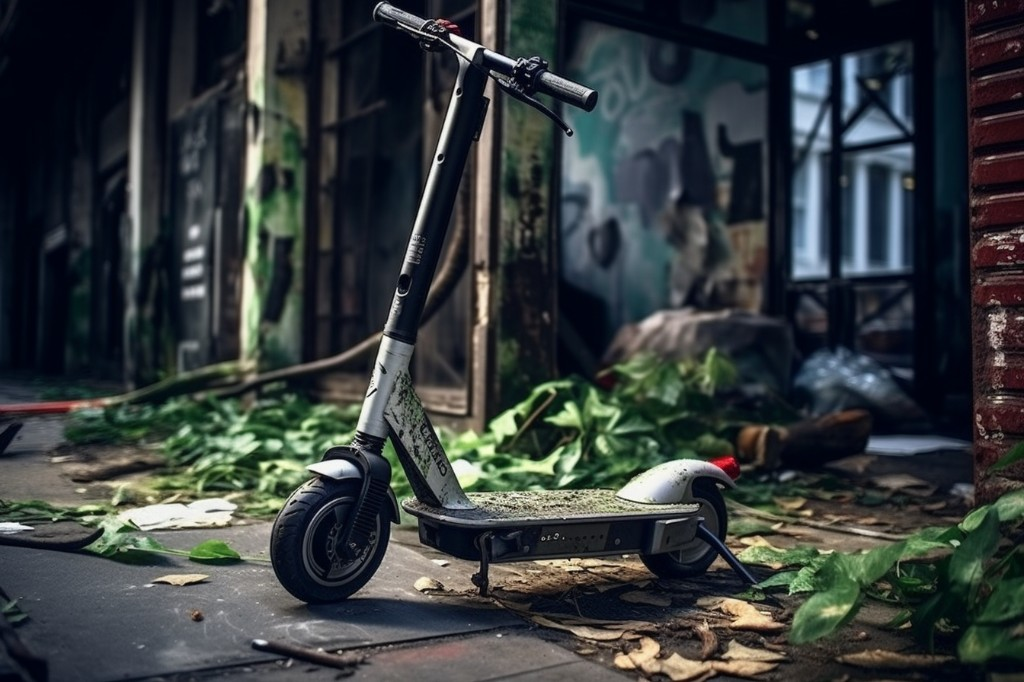
Closing Thoughts
When considering the debate between electric scooters and kick scooters, it’s important to revisit the key points we’ve discussed. We’ve examined the convenience and speed of electric scooters, ideal for longer commutes and those seeking a less strenuous ride. On the other hand, we’ve also looked at the simplicity and exercise benefits of kick scooters, great for shorter distances and those wanting to stay active.
In the end, it’s not a matter of which is objectively better, but which is better suited to your personal needs and preferences. As we’ve seen, both types of scooters have their unique advantages. Whether you’re zooming through the city on an electric scooter or enjoying a leisurely ride on a kick scooter, remember that the choice is ultimately yours.
Frequently Asked Questions
What are the main differences between an E-Scooter and a kick scooter?
The main differences lie in their mechanisms and uses. An electric scooter is powered by an electric motor and is ideal for longer distances or commutes. A kick scooter requires physical effort to move, making it a good choice for shorter distances and physical exercise.
Which is faster, an E-Scooter or a kick scooter?
Typically, an electric scooter is faster than a kick scooter due to its electric motor. However, the speed can vary based on the model and brand.
Is an E-Scooter or a kick scooter better for exercise?
A kick scooter would be better for exercise since it requires physical effort to move. On the other hand, an electric scooter provides a less strenuous ride.
Are there any legal considerations when choosing between an E-Scooter and a kick scooter?
Yes, legal considerations can vary by location. Some cities or countries may have specific laws or regulations regarding the use of electric scooters. It’s important to check local laws before purchasing.
Which is more environmentally friendly, an E-Scooter or a kick scooter?
Both have their merits in terms of environmental friendliness. E-Scooters produce no emissions during use, but their production and disposal can have environmental impacts. Kick scooters, on the other hand, require human power and produce no emissions at any stage.
